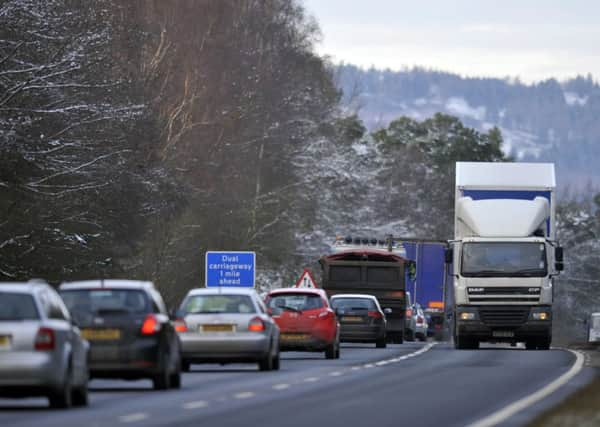Lorry lobby derails the case for a safer A9


THE crude politics of the Perth-Inverness transport corridor will just not go away. Despite the safety gloss being presented to the public, new evidence obtained from the Scottish Government by the Rail Freight Group (RFG) shows that the planned increase in lorry speed limits from 40mph to 50mph on single-carriageway sections of the A9 is being driven by “operational benefits” – and more lives will be lost as the price of government helping to keep truckers competitive.
Last year, following extensive research, the A9 Safety Group (whose members include the Road Haulage Association, the Freight Transport Association and Police Scotland) stated unambiguously that “retaining the 40mph speed limit is the safest option”. The group’s research concluded that the combination of safety cameras and a 50mph limit for lorries would reduce A9 fatal accidents by 27 per cent – but keeping the limit at 40mph would cut the death toll by 36 per cent. The same pattern applied with serious and slight injury accidents, with the 40mph limit achieving significantly better safety outcomes than 50mph.
Advertisement
Hide AdAdvertisement
Hide AdHowever, the Scottish Government then caved in to vested interests, announcing a three-year trial of 50mph – which the Road Haulage Association conceded would be “good for business”. Alarmed by this threat to existing and potential rail freight services to Inverness – which have a vastly superior safety record to road haulage – RFG then pressed the government to release any safety research which showed that 50mph was justified. None was forthcoming, and in a letter last month, Transport Scotland conceded its traffic modelling showed “clear operational benefits for the A9 from an HGV speed limit increase, primarily around journey times”.
So the 50mph HGV limit is being driven by quicker road journey times – not safety. Contrast the situation on the railway, where safety always comes first – providing the safest form of freight transport, but at a capital and operational cost which inevitably limits rail freight’s ability to compete price-wise with road hauliers.
Transport Scotland has indicated that the 50mph HGV limit “may further improve driver behaviour by reducing driver frustration”.
Ironically, the Scottish Government’s 2009 Strategic Transport Projects Review (STPR), which was supposed to determine future investment priorities, concluded that rail freight enhancements over the predominantly single-track Highland main line between Perth and Inverness would “significantly contribute to the objective ‘to address issues of driver frustration’ by encouraging a transfer of freight from road to rail, thereby reducing the number of goods vehicles on the A9. The improvements would make a significant impact on rail journey time for freight movement, which would make this mode of travel more attractive to hauliers. The subsequent reduction in the number of goods vehicles on the A9 would remove a portion of slow moving vehicles from the road leading to less driver frustration”.
Unfortunately, STPR did not address the A9 and Highland main line upgrades jointly in an integrated, cross-modal analysis, evaluating a range of road/rail package options to meet declared policy objectives for the economy, environment and road safety. So freight on rail is now faced with a double whammy – first the higher speed limit for HGVs, to be followed by full dualling of the A9, which will further transform the economics of road haulage.
Some £3 billion is to be spent on the road, and a maximum of £600 million on the railway – and one delegate to our recent annual conference summed up the consequences neatly, but ominously, when he said that the railway is threatened with a “catastrophic loss of freight traffic”. Is that really what the Scottish Government wishes to see happening as a result of its road-biased policies?
Faced with this imbalance between road and rail investment, RFG has joined forces with Transform Scotland, the sustainable transport alliance, to launch the Inter-City Express campaign, promoting the case for a radical upgrade of the rail network north of the Central Belt (www.transformscotland.org.uk/intercityexpress/).
A key plank of the campaign is to bring all seven of Scotland’s cities closer together, with a swift, safe and sustainable method of transport. As the website says about the Perth-Inverness corridor: “If dualling is good enough for road, it’s good enough for rail too. An initial cost estimate for the rail project is around £1bn – a fraction of planned road expenditure.”
Advertisement
Hide AdAdvertisement
Hide AdThe great thing about transforming rail infrastructure to the north is that freight transport would benefit enormously, as well as passengers. With a fit-for-purpose Perth-Inverness railway, we could increase the number of daily freight trains from two to as many as eight in each direction. That’s the equivalent of taking more than 300 lorries off the A9 – every day.
A government really committed to road safety would regard this as a golden opportunity.
• David Spaven is Scottish Representative of the Rail Freight Group. www.rfg.org.uk
SEE ALSO